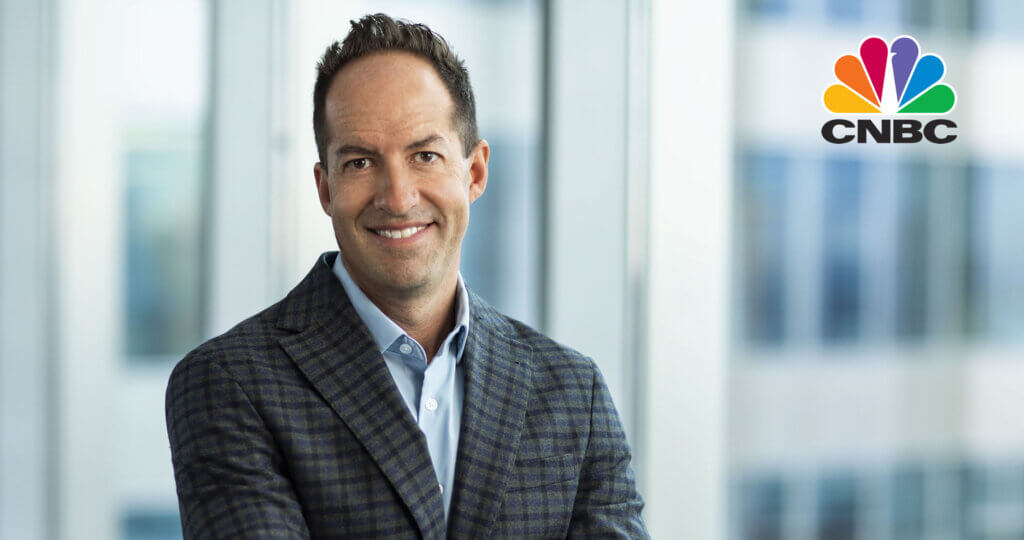Oakmark Global Fund – Investor Class
Average Annual Total Returns 03/31/21
Since Inception 08/04/99 10.31%
10-year 8.83%
5-year 12.76%
1-year 85.83%
3-month 11.05%
Gross Expense Ratio: 1.14%
Net Expense Ratio: 1.12%
Expense ratios are based on estimated amounts for the current fiscal year; actual expenses may vary.
The net expense ratio reflects a contractual advisory fee waiver agreement through January 27, 2022.
Past performance is no guarantee of future results. The performance data quoted represents past performance. Current performance may be lower or higher than the performance data quoted. The investment return and principal value vary so that an investor’s shares when redeemed may be worth more or less than the original cost. To obtain the most recent month-end performance data, view it here.
Quarter Review
It was an eventful quarter. Israel experienced another inconclusive election, Turkey’s Recep Tayyip Erdogan fired another central bank head and caused a local currency crisis, Italy installed former European Central Bank leader Mario Draghi as prime minister, and the Suez Canal was blocked for six days due to a grounded container ship, which threw logistics out of balance around the world. And this is just a small sample of global events. In the financial sphere, failures of both a family office hedge fund and a little-known supply chain finance entity caused significant losses for funding institutions. These events are all symptomatic of the global attempt to regain equilibrium from a massive pandemic, but they also reflect an environment of historically low interest rates, which have encouraged risk-taking and heavy use of leverage. Fortunately, Covid-19 vaccine development has been a source of hope. At this time last year, few believed that effective vaccines could be developed in less than three to five years, but the medical/pharmaceutical industry met the challenge and exceeded expectations. Although conditions are still far from normal, we are getting closer and one of our regular questions to corporate managers is how they expect the new “normal” will be different from the old “normal.”
Securities markets have also gone through an interesting period. In March, Japan’s Nikkei Index crossed the 30,000 mark for the first time since the early 1990s. Beginning in November, European and North American stocks rotated toward value investing, though U.S. market returns continued to dominate European markets. In part, the U.S. outperformance may derive from greater Covid-19 vaccination success. However, given that the S&P 500 Index has nearly tripled the return of the Euro Stoxx 50 over the past decade, we anticipate some reversion to the mean. Compared to U.S. stocks, European companies sell for lower average price/earnings ratios yet have greater expectations for earning improvement this year. Last year in this report, we wrote that then-current opportunities available across the globe would provide the foundation for strong future returns and we think that the past 12 months have validated that opinion. As prices have started to recover from their pandemic lows, our search for value has led us to new areas of the market (as the five purchases discussed below demonstrate).
The Oakmark Global Fund gained 11.1% in the quarter, which compares to the MSCI World Index’s 4.9% return in the period and the Lipper Global Fund Index’s 3.7% return. For the first six months of the Fund’s fiscal year, the Fund returned 43.8%, the MSCI World Index returned 19.6% and the Lipper Global Fund Index returned 20.5%. Since its inception in 1999, the Fund has achieved a compound annual rate of return of 10.3%, which compares to 5.9% for the MSCI World Index and 6.3% for the Lipper Global Fund Index.
General Motors (U.S.), Daimler (Germany), Alphabet (U.S.), Bank of America (U.S.) and Lloyds Banking Group (U.K.) were the largest contributors to the quarter’s return. The U.S., U.K. and Germany contributed most to return, reversing their outcomes from the year-ago quarter. Credit Suisse (Switzerland), Continental (Germany), Liberty Broadband (U.S.), Mastercard (U.S.) and Arconic (U.S.) detracted from the Fund’s return. The countries that detracted were Switzerland, Belgium and China.
For the first six months of the Fund’s fiscal year, the U.S., U.K. and Germany contributed most to investment return, while China was the only detractor. General Motors led the contributor list, followed by Lloyds Banking Group, CNH Industrial (U.K.), Alphabet and Daimler. Only three stocks detracted: Alibaba Group (China), Novartis (Switzerland) and SAP (Germany—a new purchase, discussed below).
Portfolio Activity
The strong performance of the Fund’s equity holdings spurred considerable portfolio action on our part. During the quarter, we introduced five names to the portfolio and eliminated two. But this understates the actual activity level. We also pruned back 21 holdings as their prices increased. In November, equity market conditions began to rotate in favor of value, and we have taken advantage of this positive turn to upgrade the quality of the portfolio. We believe that after such a strong rally in equities, the portfolio will benefit from higher quality and increased diversification.
We initiated two new international holdings in the quarter and three from the U.S. Beginning alphabetically, Capgemini is Europe’s largest IT consulting firm—an attractive sector that is growing faster than the economy as companies continue to outsource this function in a relentless pursuit of greater efficiency. Over the past decade, the French-based firm has radically transformed its business model to focus more on its digital products, diversify its client base and make its delivery model more cost effective. Yet investors have not fairly appreciated these changes. Approximately 60% of the company’s sales are now digital—one of the highest levels in the industry. This should enable Capgemini to enjoy a wave of corporate technology investment as Covid-19 prompts companies to accelerate their digital transformation roadmaps. In addition, the company has a strong business model, comparable to its U.S.- and Indian-based peers, and we believe it generates an excellent return on invested capital, converts a substantial amount of earnings into cash, trades at a significant discount to its peers and offers an attractive absolute valuation. Given the company’s strong future growth outlook, promising merger-and-acquisition opportunities, and ongoing margin improvement, we believe Capgemini offers exciting potential to add shareholder value.
Second alphabetically is U.S.-based Fiserv. Following its transformative acquisition of First Data Corporation in 2019, Fiserv is now a top provider of digital banking solutions, core account processing software and merchant acquiring services in the U.S. The company’s mission-critical software and services generate highly recurring revenue and are tied to strong secular growth trends within both digital payments and banking. We expect Fiserv’s revenues to grow in the mid- to high-single-digits over the coming years and that the company will enjoy significant margin expansion as it realizes the cost synergies from the First Data acquisition. We estimate this will produce near-term earnings per share growth of over 20%. Furthermore, with its significant free cash flow generation and excess debt capacity, the company should be able to return about 35% of its market capitalization through dividends and share repurchases over the next five years, in our view. We believe Fiserv offers an attractive risk-adjusted return potential for a well-managed business that trades for a market multiple of our estimate of normal earnings.
The second new U.S. equity purchase was General Dynamics, a leading U.S. defense contractor and owner of the world’s premier business jet franchise (Gulfstream). We were able to purchase this high-quality and durable business at a meaningful discount to our estimate of its intrinsic value after a series of near-term concerns hurt its share price. Taking a longer term view, the company’s business jet franchise should benefit from a multi-year investment program in new, differentiated product. Also, its free cash flow conversion is set to improve materially and the company is poised to benefit from a highly visible ramp up in revenue related to next generation nuclear-powered submarines. As these positives come into clearer view, we expect sentiment to improve, along with the company’s share price.
The third U.S. addition was Humana, a leader and near pure play in the fastest growing sector of managed care, Medicare Advantage. Each year, more seniors choose Medicare Advantage over traditional Medicare due to the compelling combination of lower costs and expanded benefits. Humana’s scale advantages and focus on senior care allow the company to make targeted investments in its members’ health, culminating in fewer unnecessary hospitalizations and lower chronic care costs. Much of these savings are then reinvested in the health plan, resulting in a continuously improving customer value proposition. The company’s brand also resonates well in the marketplace and has helped drive double-digit annual membership growth over the past decade—well above the rest of the industry. Further, we believe Humana has a long runway ahead as it benefits from an aging population and continued conversion of the approximately 60% of seniors who are still enrolled in traditional Medicare. Yet Humana’s shares are currently trading at a nearly 20% discount to the S&P 500 earnings multiple, which we believe doesn’t give the company enough credit for its durable competitive advantages and strong secular growth outlook.
Finally, SAP is the largest European enterprise software company and the global leader in enterprise resource planning (ERP) software products. Its share price underperformed both the broader market and its software peers over the past year as a result of a revised business strategy, unveiled in October 2020, which called for an accelerated transition to the cloud. This transition will depress near-term revenue and profits as upfront license sales become overtime subscription payments, but long term, this move will increase growth and improve customer economics. This short-term setback gave us an opportunity to invest in one of the most defensive software companies in the market. The company’s recent IPO of a portion of Qualtrics highlights the disconnect between how the market values SAP’s parts compared to its whole. We expect SAP to accelerate to high single-digit, top-line growth over the next five years as the economic benefits of its cloud transition become apparent.
We eliminated Samsung and Rolls-Royce. Samsung approached our estimate of intrinsic value, and we redeployed this capital into more attractive opportunities. We have owned the company on several occasions and we would welcome the opportunity to own this security again at the right price.
Rolls-Royce is one of the leading producers of wide-body aircraft engines, which are typically used in larger airplanes designed for long-haul and international travel. The Covid-19 pandemic has materially hurt the company’s business. Although we expect travel will rebound strongly following vaccine distribution, we believe it will take longer for long-haul and international travel to revert back to pre-pandemic levels. As a result, our intrinsic value estimate fell quite materially during the pandemic, though we continued to hold our position since the share price remained below our estimate of intrinsic value. As the share price moved closer to our estimate of intrinsic value in the fourth quarter, we began reducing our position until we were fully exited during the past quarter. We allocated the capital from the divesture of Rolls-Royce into securities with strong risk-return profiles.
The net effect of this activity and the volatile market action was to increase the U.S. portfolio weight from 44% to 46%. As always, we do not set top-down targets for these weights. Instead, we populate the portfolio with the most attractive opportunities wherever they may be found.
Currency Hedges
We defensively hedge a portion of the Fund’s exposure to currencies that we believe to be overvalued versus the U.S. dollar. As of quarter end, we found the Swiss franc to be overvalued and have hedged approximately 14% of the Fund’s franc exposure.
Thank you for being our partners in the Oakmark Global Fund. Please feel free to contact us with your questions or comments.
The securities mentioned above comprise the following percentages of the Oakmark Global Fund’s total net assets as of 03/31/21: Alibaba Group 0.8%, Alibaba Group ADR 0.8%, Alphabet Cl C 5.7%, Arconic 0.5%, Bank of America 3.9%, Capgemini 0.9%, CNH Industrial 2.9%, Continental 2.6%, Credit Suisse Group 3.7%, Daimler 4.1%, Fiserv 1.0%, General Dynamics 1.2%, General Motors 4.9%, Humana 1.8%, Liberty Broadband Cl C 2.4%, Lloyds Banking Group 5.3%, Mastercard Cl A 2.3%, Novartis 1.4%, Qualtrics 0.0%, Rolls-Royce 0.0%, Samsung 0.0% and SAP 1.3%. Portfolio holdings are subject to change without notice and are not intended as recommendations of individual stocks.
Access the full list of holdings for the Oakmark Global Fund as of the most recent quarter-end.
The MSCI World Index (Net) is a free float-adjusted, market capitalization-weighted index that is designed to measure the global equity market performance of developed markets. The index covers approximately 85% of the free float-adjusted market capitalization in each country. This benchmark calculates reinvested dividends net of withholding taxes. This index is unmanaged and investors cannot invest directly in this index.
The Lipper Global Fund Index measures the equal-weighted performance of the 30 largest global equity funds as defined by Lipper. This index is unmanaged and investors cannot invest directly in this index.
The Nikkei Stock Average (Nikkei 225) is a price-weighted average of 225 Japanese companies listed in the First Section of the Tokyo Stock Exchange. Constituents are selected based on liquidity and industry representation. This index is unmanaged and investors cannot invest directly in this index.
The S&P 500 Total Return Index is a float-adjusted, capitalization-weighted index of 500 U.S. large-capitalization stocks representing all major industries. It is a widely recognized index of broad, U.S. equity market performance. Returns reflect the reinvestment of dividends. This index is unmanaged and investors cannot invest directly in this index.
The EURO STOXX 50 Index, Europe’s leading blue-chip index for the Eurozone, provides a blue-chip representation of supersector leaders in the Eurozone. The index covers 50 stocks from 11 Eurozone countries. This index is unmanaged and investors cannot invest directly in this index.
The price to earnings ratio (“P/E”) compares a company’s current share price to its per-share earnings. It may also be known as the “price multiple” or “earnings multiple”, and gives a general indication of how expensive or cheap a stock is. Investors should not base investment decisions on any single attribute or characteristic data point.
The Fund’s portfolio tends to be invested in a relatively small number of stocks. As a result, the appreciation or depreciation of any one security held by the Fund will have a greater impact on the Fund’s net asset value than it would if the Fund invested in a larger number of securities. Although that strategy has the potential to generate attractive returns over time, it also increases the Fund’s volatility.
Investing in foreign securities presents risks that in some ways may be greater than in U.S. investments. Those risks include: currency fluctuation; different regulation, accounting standards, trading practices and levels of available information; generally higher transaction costs; and political risks.
The compound return is the rate of return, usually expressed as a percentage that represents the cumulative effect that a series of gains or losses has on an original amount of capital over a period of time. Compound returns are usually expressed in annual terms, meaning that the percentage number that is reported represents the annualized rate at which capital has compounded over time.
The percentages of hedge exposure of each foreign currency are calculated by dividing the market value of all same-currency forward contracts by the market value of the underlying equity exposure to that currency.
The information, data, analyses, and opinions presented herein (including current investment themes, the portfolio managers’ research and investment process, and portfolio characteristics) are for informational purposes only and represent the investments and views of the portfolio managers and Harris Associates L.P. as of the date written and are subject to change and may change based on market and other conditions and without notice. This content is not a recommendation of or an offer to buy or sell a security and is not warranted to be correct, complete or accurate.
Certain comments herein are based on current expectations and are considered “forward-looking statements”. These forward looking statements reflect assumptions and analyses made by the portfolio managers and Harris Associates L.P. based on their experience and perception of historical trends, current conditions, expected future developments, and other factors they believe are relevant. Actual future results are subject to a number of investment and other risks and may prove to be different from expectations. Readers are cautioned not to place undue reliance on the forward-looking statements.
All information provided is as of 03/31/2021 unless otherwise specified.







